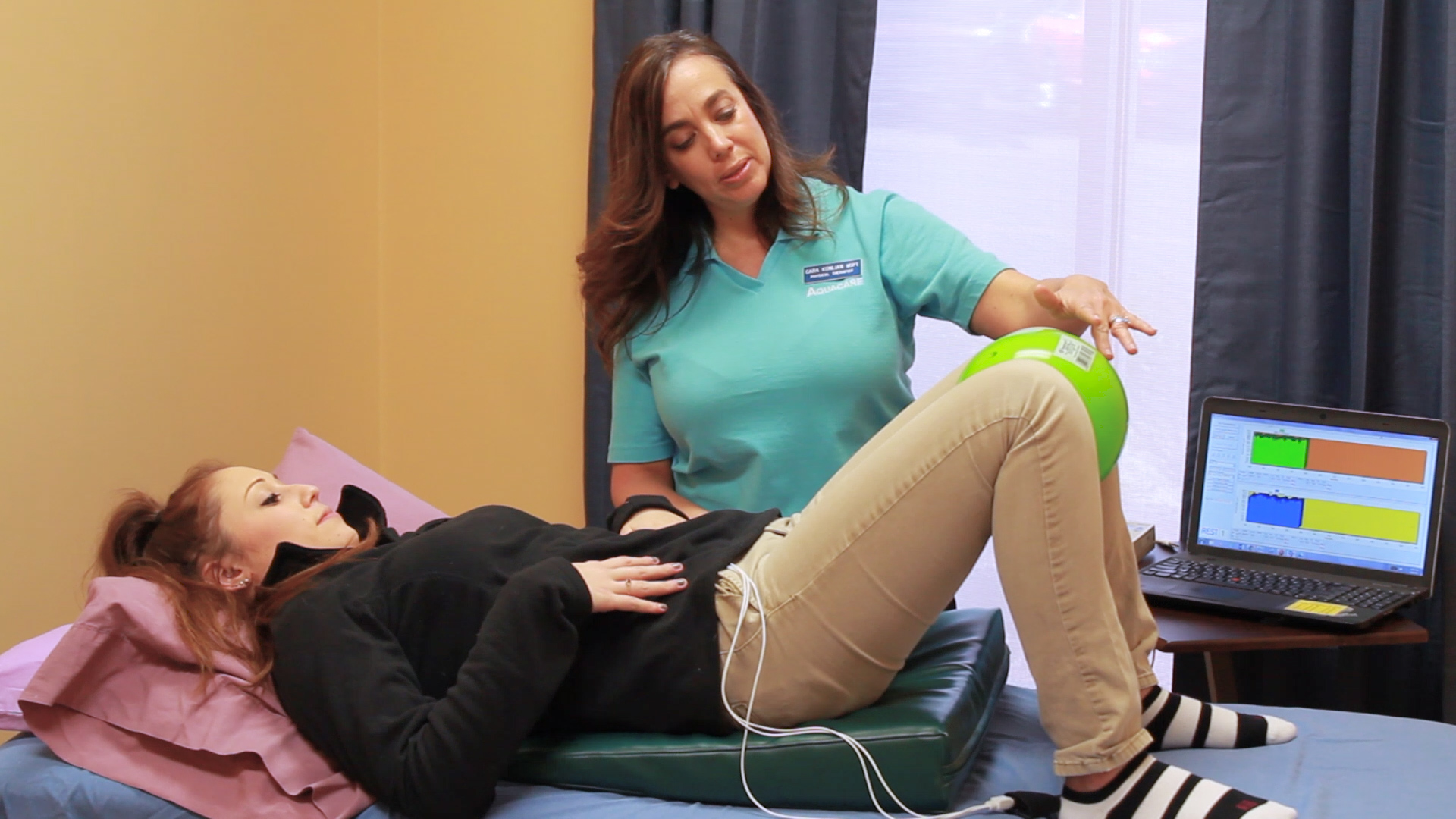Physical Therapy for Bowel Dysfunction
What Are Bowel Disorders?
Most people are unaware that pelvic floor therapy can be very effective in the treatment of bowel disorders. Bowel dysfunction can occur due to many medical reasons, however, physical therapists can evaluate and treat the musculoskeletal components of bowel dysfunction. Musculoskeletal dysfunctions leading to bowel disorders can be treated with physical therapy as outlined below.
Bowel Disorders include:
- Fecal Incontinence
- Bowel Frequency, Urgency, Retention, and/or Incomplete Emptying
- Flatulence
- Diarrhea
- Constipation
- Rectal Prolapse
- Abdominal Bloating
- Anal/Rectal and/or Abdominal Pain, Pressure, or Spasm
While there can be many medical reasons for bowel disorders, physical therapists can evaluate and treat the musculoskeletal components of bowel dysfunction. Musculoskeletal dysfunctions caused by IBS, constipation, and other bowel disorders can be treated with physical therapy by releasing myofascial trigger points in the abdomen, back, gluteal, and pelvic floor, and re-education of these muscle groups.
Constipation:
Constipation is a common disorder that primary care physicians and gastroenterologists diagnose on a regular basis. There are many causes, but when constipation is due to “pelvic floor dyssynergia”, which are restricted pelvic floor muscles around the anal region that contract instead of relax during attempted bowel movements. A licensed physical therapist, trained in pelvic floor dysfunction can reverse constipation and help you resume normal bowel function.
The pelvic floor is a group of muscles at the base of the pelvis that help control sexual, urinary, and bowel function. These muscles, namely the puborectalis, levator ani and coccyxgeus must relax and contract properly to maintain urinary and fecal continence, sexual function, and proper voiding habits. When the pelvic floor muscles fail to relax and contract properly, this can be referred to as “pelvic floor dyssynergia”. The inability to relax and contract the pelvic floor muscles correctly can lead to symptoms of constipation, straining with bowel movements, and feelings of incomplete evacuation.
Diarrhea:
Diarrhea is defined as a condition in which feces are discharged from the bowels frequently and in a liquid form. Leakage from diarrhea can occur due to weak pelvic floor muscles, due to its soft consistency.
Irritable Bowel Syndrome (IBS):
Signs and symptoms of IBS may include abdominal pain or discomfort, bloating, gas, frequent bowel movements, diarrhea, and/or constipation. As one of the most common disorders of the gastrointestinal system, IBS may result from tightening, weakening, and/or incoordination of the pelvic floor and abdominal musculature.
Fecal Incontinence:
Fecal incontinence is the inability to control bowel movements, causing stool to leak unexpectedly. Precursor symptoms include soiling, fecal urgency, and flatulence (gas loss). The amount of stool will vary as sometimes only a small quantity will be lost or the complete bowel movement may be lost.
Fecal Incontinence can occur due to the following:
- Muscle damage. Injury to the rings of muscle at the end of the rectum (anal sphincter) may make it difficult to hold stool back properly. This kind of damage can occur during childbirth, especially if you have an episiotomy or forceps are used during delivery.
- Nerve damage. Injury to the nerves that sense stool in the rectum or those that control the anal sphincter can lead to fecal incontinence. The nerve damage can be caused by childbirth, constant straining during bowel movements, spinal cord injury, or stroke. Some diseases, such as diabetes and multiple sclerosis, also can affect these nerves and cause damage that leads to fecal incontinence.
- Loss of storage capacity in the rectum. Normally, the rectum stretches to accommodate stool. If your rectum is scarred or your rectal walls have stiffened from surgery, radiation treatment, or inflammatory bowel disease, the rectum can’t stretch as much as it needs to, and excess stool can leak out.
Hemorrhoid Pain:
Hemorrhoids are painful, swollen, and inflamed veins around the anus and rectum. They occur usually due to straining with bowel movements with pregnancy, or chronic constipation. Hemorrhoids can be external (skin around the anus) or internal (inside the anal canal). If the muscles or tissues in the rectum and anal canal are restricted or in spasm, blood flow to the hemorrhoid is restricted. This decreased circulation can make healing more difficult. Physical therapy can help increase tissue mobility and reduce muscle spasms in the affected area.
Rectal Prolapse:
A rectocele is the protrusion of rectal tissue in the posterior vaginal wall. It may occur with childbirth, chronic constipation, chronic coughing, heavy lifting, estrogen deficiency, abdominal weakness, and/or obesity. Symptoms may include constipation and/or pelvic pain, fecal and/or urinary incontinence. A rectocele may be prevented through correct body mechanics with lifting, avoidance of straining, controlling and treating constipation, weight control, core stabilization exercises, and kegels. A rectocele can be successfully managed through pelvic floor physical therapy.
Physical Therapy Treatments For Bowel Disorders
Manual Therapy – External and internal rectal myofascial release/trigger point release techniques and muscle energy to reduce the tension, adhesions, and knots in muscles that cause them to become dysfunctional.
Biofeedback Therapy – To down-train tight muscles and/or up-train weak muscles.
Patient Education – Instruction on normal bowel function and identification of problematic toileting habits.
Home Exercise Program – To stretch and strengthen pelvic floor, hip, and gluteal muscles.

